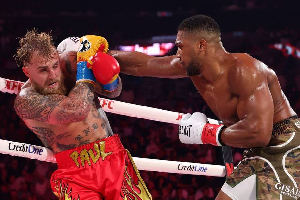Business News of Monday, 3 November 2025
Source: Oluwole Dada, Contributor
UNITY: Leaders must be the glue and not the wedge
From the boardroom to the office space, there is a recurring decimal and that is the coming together of diverse personalities, each with their own unique quirks, background, perspectives, approaches and understanding of the subject matter. With the understanding that your team is your most valuable asset, you must do everything possible to keep them united. Clashes will occur as they are inevitable because there will always be differences in opinions. However, how the leader manages it determines whether the team remains united or not.
When Satya Nadella took over Microsoft in 2014, the company was a war zone. Different divisions were competing against each other rather than collaborating. The Windows team fought with the Office team. Innovation was stifled because people were more interested in internal politics than customer value. Nadella didn’t just talk about unity but also demonstrated it. He moved from a “know-it-all” culture to a “learn-it-all” culture. He brought warring factions together, not through grand speeches, but through consistent actions that showed collaboration mattered more than individual glory.
Your team members must see that your actions encourage the unity of the team. They watch you more than they listen to you. When you favor one team member over another, they notice. When you take sides in a disagreement without hearing both perspectives, they notice. You must be quick to solve any issue arising from members’ idiosyncrasies. Quick resolution doesn’t mean rushed mediation. It means you must not let problems fester. There are cases of line managers who ignore brewing conflicts, hoping they’ll resolve themselves. Conflicts never resolve themselves. They only grow worse.
Indra Nooyi during her time at PepsiCo was known for writing personal letters to the parents of her senior executives, thanking them for raising such talented children. She understood that honoring people’s full humanity, not just their professional contributions, created bonds that went beyond the office. When conflicts arose, and they did, her team knew she valued them as whole human beings, not just as resources to be deployed. Every leader of a team has a role to unite the team for the achievement of the goal. This may be simple to say, but it requires intentionality to do.
If you’re a sales manager and two of your top performers are fighting over territory alignments, they should feel safe bringing that conflict to you. This is not because you’ll take sides, but because they trust you’ll find a fair solution. If you’re an IT department head and your infrastructure team is clashing with your applications team over resource allocation, they should know you’ll listen without prejudice and make a decision based on what’s best for the overall mission.
As a leader of a team, you need to create a psychologically safe environment. When two team members clash over how to approach a project, don’t ignore it, hoping it will blow over. Bring them together. Hear both sides. Help them find common ground. Sometimes the answer isn’t about who’s right, but about what serves the goal. You must be the rallying point of peace for the team. There must be confidence built in your team such that they can approach you to bring about calmness to any storm.
This isn’t about empty words but demonstrable action.
Your team needs to see that you embody peace in every aspect of your leadership. Your ability to mediate disputes quickly, listen impartially to all sides and creating a safe space for open and honest communication are signs of being the glue of the team. When Alan Mulally took the helm of affairs at Ford, it was a company riddled with internal rivalries and siloed departments. Mulally fostered a culture of radical transparency, where executives were expected to openly share their challenges and collaborate on solutions. His consistent, calm demeanour and focus on shared goals transformed Ford from a company on the brink of collapse to a thriving enterprise.
Another way to avoid divisions in the team is to intervene early and privately. Small irritants become big grievances. Address issues before they escalate and do so in private, so relationships aren’t publicly damaged. There was a case in one of the global banks. The regional head noticed tension between sales and compliance over how aggressively to pursue targets. Rather than convene a public showdown, he spoke separately with leaders from both sides, surfaced the core concerns, and brokered a compromise. He reviewed a KPI that balanced revenue and risk. That early, discreet intervention preserved trust and avoided demoralizing the teams.
Finally, leadership isn't only about setting targets and driving performance, it is also about nurturing a cohesive, and collaborative team. By embodying peace, discouraging division, and serving as a trusted rallying point, leaders can navigate the inevitable conflicts that arise and guide their team towards exceeding targets. Remember: unity is not uniformity. A leader’s job is to harness differences towards the goal. Be visibly calm, consistently fair, and quick to transform conflict into constructive progress. When your team knows you’ll protect both their dignity and the mission, they’ll bring their best, even when they disagree.
Oluwole Dada is the General Manager at SecureID Limited, Africa’s largest smart card manufacturing plant in Lagos, Nigeria.












